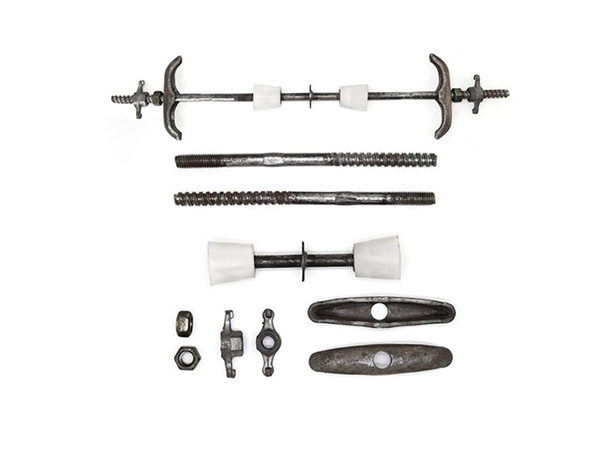- Site Navigation -

Threaded Through-Wall Rod
A Threaded Through-Wall Rod,also commonly known as a Threaded Rod Coupler,All-Thread Run-Through Anchor,or simply a Through-Bolt,is a heavy-duty anchoring system designed for applic......
Threaded Through-Wall Rod:English Introduction
A Threaded Through-Wall Rod,also commonly known as a Threaded Rod Coupler,All-Thread Run-Through Anchor,or simply a Through-Bolt,is a heavy-duty anchoring system designed for applications where a high-strength,mechanical connection is required through a wall,masonry structure,or other solid material.Unlike anchors that expand within a cavity,this system relies on a continuous threaded rod that passes completely through the structure and is secured with plates and nuts on both sides.
Its primary function is to distribute clamping force evenly on both sides of the wall,creating an exceptionally strong and reliable connection capable of supporting very heavy loads and resisting significant pull-out forces.
Key Components&Design:
The system typically consists of three main parts:
Continuous Threaded Rod:A long steel rod(often zinc-plated or hot-dip galvanized for corrosion resistance)that is fully threaded along its entire length.This allows for infinite adjustability of nut placement.
Bearing Plates:Heavy-duty square or round steel plates,with a hole in the center,that are placed on both the internal(access side)and external(far side)of the wall.
Hex Nuts:High-strength nuts(usually two per side)that are threaded onto the rod to secure the bearing plates in place.
How It Works:
The principle is one of direct mechanical compression:
The threaded rod is passed through a pre-drilled hole that runs completely through the wall.
A bearing plate is placed on the far side(external)of the wall,followed by one or two hex nuts.
On the near side(internal),another bearing plate is placed against the wall surface.
The fixture to be mounted(e.g.,a bracket)is then slid onto the rod.
Finally,hex nuts are tightened on the internal side.As these nuts are tightened,they pull the rod,drawing the external plate and nuts toward the internal plate.This action compresses the entire wall structure between the two plates,creating an immensely powerful clamping force.
Common Applications:
Structural Construction:Securing ledger boards to concrete or masonry walls for deck and balcony construction(a critical application).
Heavy Machinery:Anchoring large industrial equipment,conveyors,and structural supports to walls.
Infrastructure:Installing pipe and conduit supports,HVAC ducting,and electrical busways through walls.
Retrofitting:Adding seismic bracing or reinforcement to existing structures.
Heavy Shelving:Supporting extremely high-weight storage racking systems in warehouses.








